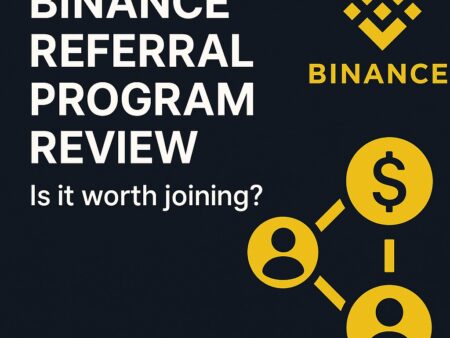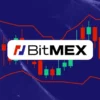Logging into Binance is your first step into a global marketplace for cryptocurrency trading. Binance offers you a platform where you can trade myriad cryptocurrencies, manage a portfolio, and utilize advanced trading tools. To start this journey, you need to set up and secure your Binance account.
Securing your Binance account involves various security features, including two-factor authentication (2FA) and withdrawal whitelist function. These features help protect your assets by providing an extra layer of security for access control and transaction permissions. As you prepare to fund your account and engage in trading, it’s vital to understand the platform’s features and legal framework. Binance offers a multifaceted suite of tools and services, from its basic exchange platform to advanced trading systems and additional services. The platform’s customer support provides assistance for your inquiries and concerns as you navigate your way through the functionalities and offerings.
Getting Started with Binance
In this section, you’ll learn the essentials of beginning your journey with Binance, from understanding what Binance is to creating your own trading account.
Understanding Binance
Binance is a leading cryptocurrency exchange platform that provides a multitude of services for digital asset traders and enthusiasts. It’s known for its robust platform with a diverse range of cryptocurrencies available for trading. When you use Binance, you gain access to various tools and features that cater to both beginners and experienced traders.
Registering an Account
To start trading on Binance, the first step is to register an account. This process is straightforward:
Remember that completing identity verification (KYC – Know Your Customer) is mandatory to unlock all account features. This process involves providing personal information and uploading identification documents to comply with regulatory requirements. Once your account is fully verified, you can start depositing funds, trading, and accessing the full suite of Binance features.
NOT YET A BINANCE USER?
Join today with the Binance Referral Code for exclusive benefits or read our Binance Review to learn why Binance is the right exchange for you!
GET UP TO 50% OFF TRADING FEES WITH THE CODE “WUPBLUYN”
Account Verification
To transact on Binance, you need to complete account verification, which enhances the security of your transactions and ensures compliance with legal requirements. Verification also helps in increasing your withdrawal and deposit limits.
Basic Verification
Basic Verification on Binance requires you to submit your personal information. This includes your legal name, your date of birth, and your phone number. Completing Basic Verification will give you access to Binance services with limited functionality.
Advanced Identity Verification
Advanced Identity Verification allows for higher transaction limits. You need to provide additional documents, which typically include a government-issued identity document (ID) and proof of address.
The Know Your Customer (KYC) process is a critical part of Advanced Verification, ensuring that Binance complies with anti-money laundering laws. Once your documents are uploaded, verification may take a few minutes to several days, depending on the current volume of requests and the correctness of the submitted information.
Securing Your Account
Your Binance account holds valuable assets and personal information that must be safeguarded. High levels of security are paramount, and this involves more than just a strong password. Below, learn to fortify your account against unauthorized access and potential threats.
Setting Up Two-Factor Authentication (2FA)
Two-Factor Authentication (2FA) adds an extra layer of security to your Binance account. In addition to your password, 2FA requires a second piece of information, a one-time code, during login.
To activate 2FA:
Log in to Your Binance Account
-
Visit www.binance.com and sign in.
2. Go to Security Settings
-
Hover over your profile icon (top right) → Click “Security” from the dropdown.
3. Choose Your 2FA Method
Binance offers a few 2FA options:
-
Google Authenticator (recommended)
-
SMS Authentication
-
YubiKey (hardware-based)
Click “Enable” next to your preferred method.
4. Set Up and Scan the QR Code
-
If using Google Authenticator, download the app on your phone.
-
Open the app, scan the QR code shown on Binance.
-
Save the 16-digit backup key shown—this is essential if you lose your device.
5. Enter Verification Codes
-
Enter the code from your Authenticator app or SMS.
-
Binance may also ask for your account login password and an email verification code.
Security Tips and Best Practices
Strong Password: Create a unique password that combines uppercase and lowercase letters, numbers, and symbols.
Phishing Avoidance: Always check that you are visiting the official Binance domain before logging in to prevent sharing your credentials on fraudulent websites.
Withdrawal Whitelist: For enhanced control, enable withdrawal address whitelist to restrict outgoing transfers to verified addresses only.
Keep these best practices in mind to maintain the security integrity of your Binance account.
Funding Your Account
Before diving into the options available for funding your Binance account, it is crucial to understand the different methods at your disposal and any fees that may apply. By familiarizing yourself with this information, you can efficiently deposit funds and begin trading with clarity and confidence.
Deposit Methods
Cryptocurrencies:You can deposit a variety of cryptocurrencies into your Binance account. To deposit crypto, navigate to your Binance wallet and select the ‘Deposit’ option. Choose the cryptocurrency you want to deposit and you will receive a wallet address to send the funds to.
Fiat Money: Binance also accepts fiat money deposits. You can use:
-
Bank Transfers (SEPA, SWIFT)
-
Credit/Debit Cards (Visa, Mastercard)
-
Third-Party Payment Providers (e.g., Simplex, Banxa, Mercuryo)
-
Cash Balance from P2P Trading
-
Apple Pay / Google Pay (in supported regions)
-
Local Payment Gateways (varies by country)
Availability of these methods may vary depending on your country of residence and verification status.
Supported Fiat Deposit Methods
| Method | Description |
|---|---|
| Bank Transfers (SEPA/SWIFT) | Direct transfers from your bank account. SEPA is ideal for EU users. |
| Credit/Debit Cards | Instantly deposit using Visa or Mastercard. |
| Third-Party Providers | Services like Simplex, Banxa, and Mercuryo offer quick deposits. |
| P2P Trading Cash Balance | Buy crypto from other users and use the fiat balance in your Binance wallet. |
| Apple Pay / Google Pay | Fast and seamless deposits through mobile wallets (region-dependent). |
| Local Payment Gateways | Country-specific options like Payeer, Advcash, etc. |
⚠️ Note: Available deposit methods depend on your country and KYC verification level.
Make sure to check if your preferred method is available in your region, as Binance caters to a global market with region-specific options.
Understanding Deposit Fees
Cryptocurrencies:Typically, Binance does not charge a fee for depositing cryptocurrencies. However, network fees apply when you initiate a blockchain transaction, and these fees go to miners or validators, not to Binance.
It’s vital to check the latest fee schedule on Binance’s website as fees can fluctuate based on market conditions. Keep track of transaction fees to ensure they align with your investment strategy and budget.
Trading on Binance
Binance offers a flexible trading experience allowing you to engage in spot and margin trading, or use the Convert feature for quick trades. Understanding the trading fees and limits is crucial for efficient trading on the platform.
Spot and Margin Trading
When you trade on Binance, you have options for both spot and margin trading. Spot trading involves the immediate purchase or sale of digital assets at current market prices. Here, you buy (long) or sell (short) cryptocurrencies such as Bitcoin (BTC) or Ethereum (ETH) against others or against fiat currencies like USD.
To start spot trading:
-
Create and Verify Your Account
-
Sign up at binance.com
-
Complete KYC verification to unlock full trading features.
-
-
Deposit Funds
-
Use fiat deposit methods (bank transfer, card, etc.) or
-
Deposit crypto from an external wallet to your Binance spot wallet.
-
-
Go to the Spot Market
-
Hover over “Trade” in the top menu and select “Spot”.
-
Choose your trading pair (e.g., BTC/USDT, ETH/EUR) from the top-left corner.
-
-
Place a Trade
-
Select the order type:
-
Limit (set your own price)
-
Market (buys/sells at best available price)
-
Stop-limit or OCO (more advanced)
-
-
Enter the amount you want to buy or sell.
-
Click Buy or Sell to place your order.
-
-
Manage Your Assets
-
Track your positions in the “Orders” and “Wallet” sections.
-
You can withdraw, hold, or move assets into other services like Binance Earn.
-
On the other hand, with margin trading, you can borrow funds to increase your trading volume, potentially amplifying your gains or losses. It’s important to trade with caution as margin increases risks significantly.
Using Binance’s Convert Feature
For a more straightforward way to trade, Binance’s Convert feature allows you to swap one crypto for another directly. This does not involve complex trading interfaces or charts and is a quick process:
It’s an efficient method if you’re looking to trade quickly without entering specific order types or looking for particular price points.
Understanding Trading Fees and Limits
Every trade on Binance incurs a fee, which varies depending on your 30-day trading volume and your balance of Binance Coin (BNB). Fees are reduced as your volume increases or if you use BNB to pay.
Trading fees are typically a small percentage of the trade value and are lower for makers (who add liquidity to the market by placing limit orders) than for takers (who remove liquidity by matching orders).
Here’s a quick look at the standard fee structure:
Note: Using BNB for transaction fees applies a 25% discount to the above rates.
Trade limits are also in place, varying with different account levels based on verification status. The higher your level, the larger your daily withdrawal limit. It’s important to verify your account fully to increase your limits and to ensure a smooth trading experience.
Managing Your Portfolio
Effectively managing your portfolio on Binance involves regularly adding and withdrawing funds as needed, and keeping track of your balances and rewards to optimize your financial strategy.
Adding and Withdrawing Funds
To add funds to your Binance portfolio, you can either make a direct deposit of cryptocurrency from an external wallet or purchase crypto using fiat currencies through various payment methods provided by Binance. Ensure your transactions are confirmed and reflect in your balance, which can be viewed in the “Funds” section of your account.
Withdrawing funds follows a similar process. Go to the “Withdraw” section, select the cryptocurrency or fiat currency you wish to withdraw, and complete the withdrawal by entering the required details of your external wallet or bank account. Always double-check withdrawal addresses and keep an eye on minimum withdrawal amounts and transaction fees.
Tracking Your Balances and Rewards
Your balance provides a snapshot of your current holdings, which includes your deposited funds, purchased cryptocurrencies, and any crypto rewards earned. To view your overall balance and individual asset distribution, use Binance’s built-in Portfolio Insight tool or a third-party portfolio tracker that can link to your Binance account for convenience.
Earn rewards through various activities such as staking. Staking involves locking in certain cryptocurrencies to support network operations and, in return, you receive staking rewards. Navigate to the Binance Staking page to select the staking products that fit your portfolio goals. Review the estimated annual yield rates and staking periods to maximize your crypto rewards.
By diligently monitoring and adjusting your portfolio, you can better manage your assets and position yourself to potentially earn rewards from your cryptocurrency investments.
Binance Platforms and Tools
Binance offers a comprehensive suite of platforms and tools designed to make your trading experience on the world’s leading cryptocurrency exchange efficient and accessible wherever you are.
Desktop and Mobile App Usage
For trading on the go, download the Binance mobile app through your device’s respective app store. You can trade, access your wallet, and utilize other features from your smartphone or tablet. The Binance desktop platform can be accessed via a web browser or by downloading the desktop application, offering a more robust trading environment and detailed charts for in-depth analysis.
Binance Academy and Resources
Binance Academy is your educational portal where you can learn about blockchain, cryptocurrency, and DeFi in a structured manner. This resource offers articles, news updates, and a glossary to help you stay informed in the dynamic world of digital assets. Utilize these tools to gain knowledge and make informed decisions on the Binance platform.
Legal and Compliance
When utilizing Binance, it is crucial that you understand the implications of the Terms of Use and adhere to the Privacy Policy. These documents govern your access and dictate your legal obligations while using the platform.
Understanding Binance’s Terms of Use
Binance’s Terms of Use establish the legal requirements necessary for using their services. By creating an account, you agree to these terms which include, but are not limited to:
-
Age Requirement
Users must be at least 18 years old or of legal age in their jurisdiction. -
KYC and AML Compliance
Binance requires identity verification to comply with Know Your Customer (KYC) and Anti-Money Laundering (AML) regulations. -
Account Responsibility
You’re responsible for maintaining the confidentiality of your account credentials and any activities that occur under your account. -
Risk Disclosure
Trading digital assets involves significant risk, including the potential loss of capital. Binance is not liable for losses incurred from market volatility. -
Prohibited Activities
Activities such as fraud, money laundering, and market manipulation are strictly forbidden and can lead to account suspension or legal action. -
Jurisdictional Limitations
Binance may restrict or prohibit access in certain countries due to legal or regulatory requirements. -
Termination Rights
Binance reserves the right to suspend or terminate accounts for violations of the terms or applicable laws.
Privacy Policy Adherence
Adhering to the Privacy Policy is essential for safeguarding your personal information. Key aspects you need to be aware of include:
-
Data Collection
Binance collects personal data including name, email, phone number, government-issued ID, and transaction history to comply with regulatory requirements and provide services. -
Use of Information
Your data is used for account verification, transaction processing, fraud prevention, legal compliance, and service improvement. -
Data Sharing
Binance may share data with regulatory bodies, payment providers, and affiliated entities—but only when legally required or necessary for providing services. -
User Control and Access
Users can update their personal information, manage communication preferences, and request data access or deletion where applicable by law. -
Cookies and Tracking Technologies
Binance uses cookies and similar technologies to enhance user experience, gather analytics, and support security features. -
Data Security Measures
Binance implements encryption, access controls, and risk monitoring to protect your personal information against unauthorized access or misuse.
Support and Assistance
When using Binance, you have access to comprehensive support and assistance services. Whether you encounter issues with login or need help navigating through your account, Binance offers multiple support channels and troubleshooting guides to provide solutions.
Customer Support Channels
If you need help with your Binance account, the following support channels are available to address your concerns:
-
Help Center (FAQs & Guides)
Visit the Binance Help Center for answers to common issues like deposits, withdrawals, trading, and verification. -
Live Chat Support
Accessible via the Binance website or app. Click the chat icon in the bottom right corner to start a conversation with a virtual assistant or escalate to a live agent. -
Submit a Request (Support Ticket)
If your issue requires further investigation, you can submit a ticket with full details and any necessary screenshots. -
Social Media Channels
Binance maintains active support presence on platforms like:-
[Telegram: Binance Official Groups]
(Always verify it’s an official account — Binance will never message you first.)
-
Email Support (Limited Use)
Binance no longer uses email for most support but may reach out in follow-ups to support tickets or identity verification cases.
Troubleshooting Common Issues
Here are steps to resolve some of the frequent login issues you might encounter:
✅ 1. Incorrect Password or Email
-
Double-check for typos, including case sensitivity.
-
Use the “Forgot Password” link to reset if needed.
-
Ensure you’re using the correct email tied to your Binance account.
✅ 2. Two-Factor Authentication (2FA) Issues
-
Make sure the time on your phone is set to automatic/time-sync enabled—this helps with code accuracy.
-
If your authenticator app is not working, try the backup codes or click “Need help?” at the 2FA screen to start recovery.
✅ 3. Account Locked or Suspended
-
Binance may temporarily lock accounts for suspicious activity.
-
Follow prompts to complete identity verification or submit a support ticket to resolve the issue.
✅ 4. CAPTCHA or Verification Errors
-
Clear your browser cache and cookies.
-
Try switching browsers or using Incognito/Private mode.
-
Disable browser extensions that might interfere with scripts.
✅ 5. Login Attempt Blocked
-
If Binance flags a login as suspicious, you may receive an email for confirmation.
-
Open the email and approve the login before trying again.
✅ 6. App-Specific Issues
-
Ensure the Binance app is up to date via the App Store or Google Play.
-
Try reinstalling the app or logging in via browser as a backup.
For further help, visit the Binance FAQ section or submit a support ticket if your issue is not addressed in the provided resources.
Advanced Features and Offerings
Binance provides a comprehensive set of features for those looking to engage in advanced trading, with specialized interfaces and options for both peer-to-peer (P2P) transactions and fiat-to-crypto trading.
Binance Advanced Trading Interfaces
Binance’s advanced trading interfaces are designed for experienced traders who require more in-depth tools and functionalities. The Advanced Trade interface offers an enhanced experience with capabilities such as:
-
Customizable Charting Tools
Access advanced candlestick charts, multiple time frames, and drawing tools via integrated TradingView support. -
Depth-of-Market View
Analyze real-time order book depth and liquidity levels, helping traders understand supply and demand at different price levels. -
Advanced Order Types
Use complex order types like:-
Stop-Limit
-
OCO (One Cancels the Other)
-
Trailing Stop
-
Post-Only / Fill or Kill / Immediate or Cancel
-
-
Multi-Chart Layouts
View and trade multiple pairs simultaneously with customizable screen configurations. -
Real-Time Trade Feed
Monitor recent trades across the market to detect momentum and large volume movements. -
Portfolio & Order Management
Easily track open orders, order history, PnL (Profit and Loss), and balance distribution—all within one interface.
These interfaces facilitate a more comprehensive market assessment, enabling you to trade crypto more effectively.
P2P and Fiat-to-Crypto Trading
Binance’s platform also caters to users who prefer trading directly with others or using fiat currencies to trade crypto.
This direct trading approach allows for a personalized trading experience that aligns with individual needs and local market conditions.
Exploring Additional Services
Beyond basic trading, Binance offers services like staking and rewards, as well as financial tools like crypto loans and Binance Pay. These services can enhance your crypto experience by providing opportunities to earn interest on your holdings or access funds without liquidating your assets.
Staking and Rewards
With Binance Staking, you can earn rewards on your cryptocurrency holdings by participating in the staking process. This involves locking up certain types of cryptocurrencies to support the operation of a blockchain network and, in return, you receive staking rewards. These rewards are typically paid out in additional crypto tokens.
Crypto Loans and Binance Pay
Binance also offers the possibility of crypto loans, where you can borrow money against your cryptocurrency holdings as collateral. This is useful if you need liquid funds but don’t want to sell your crypto assets.
Binance Pay is a contactless, borderless payment feature that allows you to pay and get paid in crypto. It’s an easy and secure way to send and receive cryptocurrencies without incurring high fees.
Staying Informed
It’s critical to stay current with Binance’s latest news and updates during your crypto journey, as they can affect your trading activities and account management. This knowledge ensures you’re utilizing Binance to its fullest potential by keeping pace with the constant evolution of the crypto space.
Binance News and Updates
Binance frequently releases updates regarding its platform, services, and changes in regulatory compliance. To ensure you don’t miss out on any vital information:
-
Check the Official Announcement Page
Visit the Binance Announcements section regularly for updates on:-
System upgrades and maintenance
-
New listings and trading pairs
-
Fee structure changes
-
Compliance and regional policy updates
-
-
Enable Email Notifications
Make sure your account settings have email alerts enabled so you receive key announcements directly in your inbox. -
Follow Binance on Social Media
-
Twitter/X (@binance) – Real-time updates and market news
-
[Telegram (Official Binance Channel)] – Be cautious and verify authenticity
-
YouTube & Blog – In-depth platform updates and tutorials
-
-
In-App Notifications
Binance also pushes alerts and announcements directly within the app—keep notifications turned on. -
Subscribe to the Newsletter
Opt in to Binance’s email newsletter for curated updates, educational content, and promo opportunities.
By incorporating these habits, you’ll receive basic and advanced information that will help you make informed decisions on the Binance platform.
Binance Ecosystem
The Binance Ecosystem encompasses a range of services centered around blockchain technology. It serves as a hub for trading cryptocurrencies and includes a native coin that plays a pivotal role within the platform.
Understanding Binance Coin (BNB)
Binance Coin (BNB) is the native cryptocurrency of the Binance platform. It is used to facilitate transactions within the Binance Ecosystem, offering benefits such as:
-
Trading Fee Discounts
Users who pay trading fees with BNB receive discounts on spot, margin, and futures trades. -
Launchpad Token Access
BNB holders can participate in exclusive Binance Launchpad token sales (IEOs), often giving early access to new crypto projects. -
Transaction Fees on Binance Smart Chain (BSC)
BNB is used to pay for gas fees when interacting with Binance Smart Chain dApps and smart contracts. -
Cross-Platform Utility
BNB is accepted across multiple platforms for payments, travel bookings, and virtual goods. -
Staking and Earning
Users can stake or lock BNB through Binance Earn to receive interest or rewards over time. -
Burn Mechanism
Binance regularly burns (destroys) a portion of BNB supply, reducing total supply and potentially increasing scarcity.
📈 Fun Fact: BNB started as an ERC-20 token on Ethereum but was later migrated to Binance Chain and BSC, making it one of the most widely used utility tokens in the crypto space.
As an integral part of the ecosystem, BNB provides a versatile functionality that extends beyond the Binance Exchange to other services like Binance Chain and Binance Smart Chain.
Binance Chain and Binance Smart Chain
Binance Chain is a blockchain network optimized for ultra-fast trading. It is designed to accommodate the performance needs of the Binance cryptocurrency exchange but also supports other transactional functions.
Binance Smart Chain (BSC) operates parallel to Binance Chain. It adds smart contract functionality and compatibility with the Ethereum Virtual Machine (EVM), leading to:
-
Smart Contract Support
Developers can deploy decentralized applications (dApps) on BSC using Solidity—the same language used for Ethereum dApps. -
Ethereum Compatibility
Since BSC is EVM-compatible, popular Ethereum tools like MetaMask, Remix, and Truffle work seamlessly. -
Lower Fees and Faster Transactions
BSC offers significantly lower gas fees and faster block times (~3 seconds), making it ideal for DeFi applications. -
Dual Chain Architecture
Users can easily transfer assets between Binance Chain (fast trading) and BSC (smart contract execution) using cross-chain bridges. -
Robust Ecosystem
BSC powers hundreds of DeFi, NFT, and gaming platforms such as PancakeSwap, Venus, and Alpaca Finance.
🧠 Did You Know?
BSC is secured by a Proof-of-Staked Authority (PoSA) model, which combines delegated staking with high-speed consensus—greatly improving efficiency over Ethereum’s older models.
Both these chains play key roles in supporting the broader aims of the Binance Ecosystem, which is to increase the freedom of money globally. BNB serves as the cornerstone across these platforms, facilitating various utilities such as transaction fees and token governance.
Responsible Trading
When engaging with Binance for trading cryptocurrencies, it’s vital to approach the markets with a clear strategy and a keen awareness of the inherent risks. By applying responsible trading practices, you protect your investments and navigate the often volatile crypto landscape more securely.
Risk Management Strategies
Establish Stop-Loss Orders: A stop-loss order automatically sells off your asset when its price falls to a certain level, thus capping potential losses.
Diversification: Spread your investments across various assets to mitigate risk. If one investment underperforms, the others may balance it out.
Responsible Investment Practices
Due Diligence: Before investing in any cryptocurrency, thoroughly research to understand its market position and potential for growth or decline.
Avoid Emotional Trading: Market highs and lows can lead to impulsive decisions. Maintain a disciplined approach and stick to your trading plan.
Conclusion
To ensure a secure and efficient cryptocurrency trading experience on Binance, it’s important to carefully follow the registration and account setup process. Once you’ve registered using your email, phone number, or a third-party service like Google or Apple, you must complete identity verification to activate your account fully.
Security is a priority, so take advantage of Binance’s features to protect your account, including setting a strong password and enabling two-factor authentication (2FA). Remember to check that the official Binance website is used to prevent phishing attempts.
Here’s a brief recap of your action items:
With Binance’s comprehensive educational resources, diverse cryptocurrencies, and trading features like spot and futures options, you have the tools required at your disposal. Additionally, with low fees and high liquidity, your trading experience is designed to be cost-effective and straightforward.
Remember to familiarize yourself with Binance’s interface, whether on mobile or desktop, and utilize APIs for automated trading if that’s within your interest. With consistent vigilance and ongoing learning, you’re set to navigate the Binance platform with confidence.
Frequently Asked Questions
Navigating Binance doesn’t have to be complicated. Below are straightforward steps and essential information to help you with common questions regarding account setup and use on Binance.
How can I create a new account on Binance using my mobile device?
To create a new Binance account on your mobile, download the Binance app and register with your email or mobile number. Follow the app’s instructions to complete the account setup.
What steps do I need to follow to open an account on Binance?
Opening an account involves registering on the Binance website or app with your email, phone number, or through an Apple/Google account. After registration, complete the necessary identity verification.
As a beginner, how do I start trading on Binance?
Begin trading on Binance by first creating and verifying your account. Then, deposit funds or buy crypto using available payment methods. Finally, explore the trading platform to start your trading journey.
What measures should I take to ensure my Binance account is secure after login?
Post-login, secure your Binance account by setting up two-factor authentication (2FA), using a strong password, and considering additional security features like withdrawal whitelisting and device management.
What are the regulations regarding US citizens using Binance?
US citizens are subject to specific regulations and should use Binance.US, a separate exchange designed to comply with US financial regulations, rather than Binance.com.
How can I access and use my Binance Wallet for transactions?
Access your Binance Wallet by logging into your account. Navigate to the ‘Spot Wallet’ to manage your funds, make deposits, and process withdrawals, or use it to participate in trading and other financial transactions on the platform.
Steven has a solid Cryptocurrency background, having worked with multiple Crypto startups as CMO. He knows the ins and outs of promoting both physical products and SaaS and is now providing valuable insights when testing different Crypto services.









